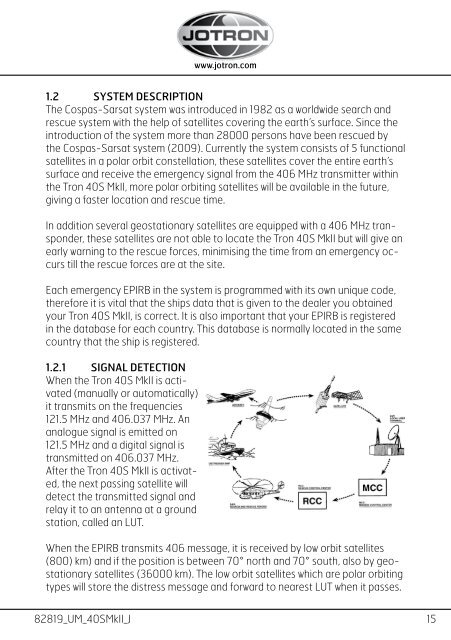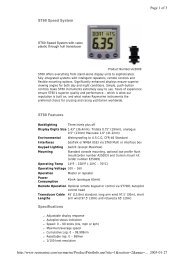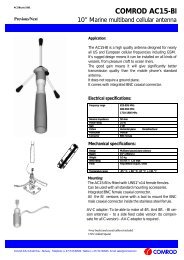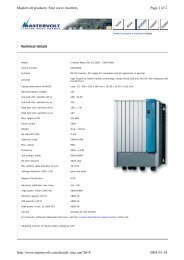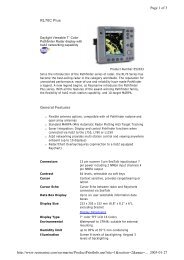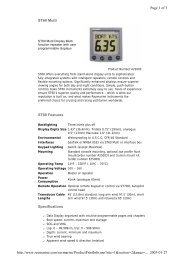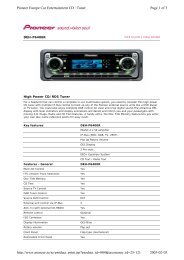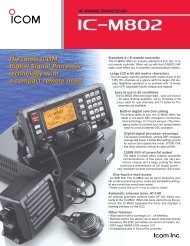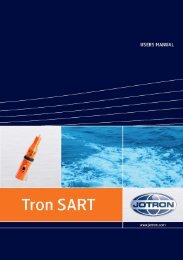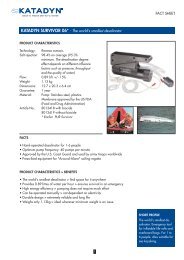TRON40GPS - Regina
TRON40GPS - Regina
TRON40GPS - Regina
You also want an ePaper? Increase the reach of your titles
YUMPU automatically turns print PDFs into web optimized ePapers that Google loves.
www.jotron.com<br />
1.2 SYSTEM DESCRIPTION<br />
The Cospas-Sarsat system was introduced in 1982 as a worldwide search and<br />
rescue system with the help of satellites covering the earth’s surface. Since the<br />
introduction of the system more than 28000 persons have been rescued by<br />
the Cospas-Sarsat system (2009). Currently the system consists of 5 functional<br />
satellites in a polar orbit constellation, these satellites cover the entire earth’s<br />
surface and receive the emergency signal from the 406 MHz transmitter within<br />
the Tron 40S MkII, more polar orbiting satellites will be available in the future,<br />
giving a faster location and rescue time.<br />
In addition several geostationary satellites are equipped with a 406 MHz transponder,<br />
these satellites are not able to locate the Tron 40S MkII but will give an<br />
early warning to the rescue forces, minimising the time from an emergency occurs<br />
till the rescue forces are at the site.<br />
Each emergency EPIRB in the system is programmed with its own unique code,<br />
therefore it is vital that the ships data that is given to the dealer you obtained<br />
your Tron 40S MkII, is correct. It is also important that your EPIRB is registered<br />
in the database for each country. This database is normally located in the same<br />
country that the ship is registered.<br />
1.2.1 SIGNAL DETECTION<br />
When the Tron 40S MkII is activated<br />
(manually or automatically)<br />
it transmits on the frequencies<br />
121.5 MHz and 406.037 MHz. An<br />
analogue signal is emitted on<br />
121.5 MHz and a digital signal is<br />
transmitted on 406.037 MHz.<br />
After the Tron 40S MkII is activated,<br />
the next passing satellite will<br />
detect the transmitted signal and<br />
relay it to an antenna at a ground<br />
station, called an LUT.<br />
When the EPIRB transmits 406 message, it is received by low orbit satellites<br />
(800) km) and if the position is between 70° north and 70° south, also by geostationary<br />
satellites (36000 km). The low orbit satellites which are polar orbiting<br />
types will store the distress message and forward to nearest LUT when it passes.<br />
82819_UM_40SMkII_J<br />
15


